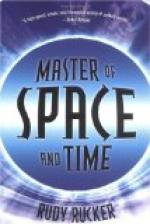The introduction of the Morse code and its adaptation to signaling by sight and sound did much to simplify these means of communication. The development of signaling after the adoption of the Morse code, though it occurred subsequent to the introduction of the telegraph, may properly be spoken of here, since the systems dependent upon sight and sound grow from origins more primitive than those which depend upon electricity. Up to the middle of the nineteenth century armies had made slight progress in perfecting means of communication. The British army had no regular signal service until after the recommendations of Colomb proved their worth in naval affairs. The German army, whose systems of communication have now reached such perfection, did not establish an army signal service until 1902.
The simplicity of the dot and dash of the Morse code makes it readily available for almost any form of signaling under all possible conditions. Two persons within sight of each other, who understand the code, may establish communication by waving the most conspicuous object at hand, using a short swing for a dot and a long swing for a dash. Two different shapes may also be exhibited, one representing a dot and the other a dash. The dot-and-dash system is also admirably adapted for night signaling. A search-light beam may be swung across the sky through short and long arcs, a light may be exhibited and hidden for short and long periods, and so on. Where the search-light may be played upon a cloud it may be seen for very considerable distances, messages having been sent forty miles by this means. Fog-horns, whistles, etc., may be similarly employed during fogs or amid thick smoke. A short blast represents a dot, and a long one a dash.
The heliograph, which established communication by means of short and long light-flashes, is another important means of signaling to which the Morse code has been applied. This instrument catches the rays of the sun upon a mirror, and thence casts them to a distant receiving station. A small key which throws the mirror out of alignment serves to obscure the flashes for a space at the will of the sender, and so produces short or long flashes.
The British army has made wide use of the heliograph in India and Africa. During the British-Boer War It formed the sole means of communication between besieged garrisons and the relief forces. Where no mountain ranges intervene and a bright sun is available, heliographic messages may be read at a distance of one hundred and fifty miles.
While the British navy used flashing lights for night signals, the United States and most other navies adopted a system of fixed colored lights. The system in use in the United States Navy is known as the Ardois system. In this system the messages are sent by four lights, usually electric, which are suspended from a mast or yard-arm. The lights are manipulated by a keyboard situated at a convenient point on the




